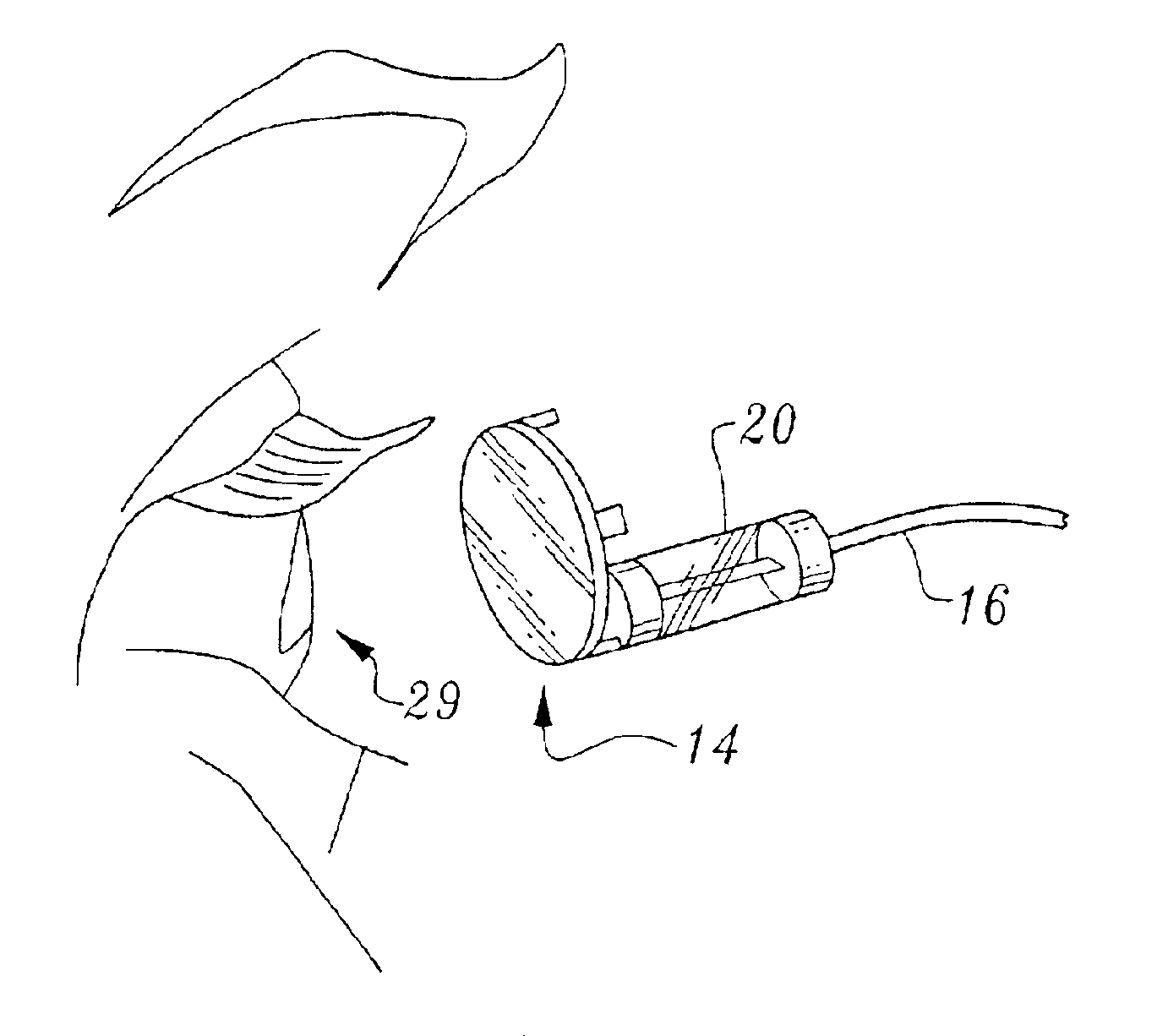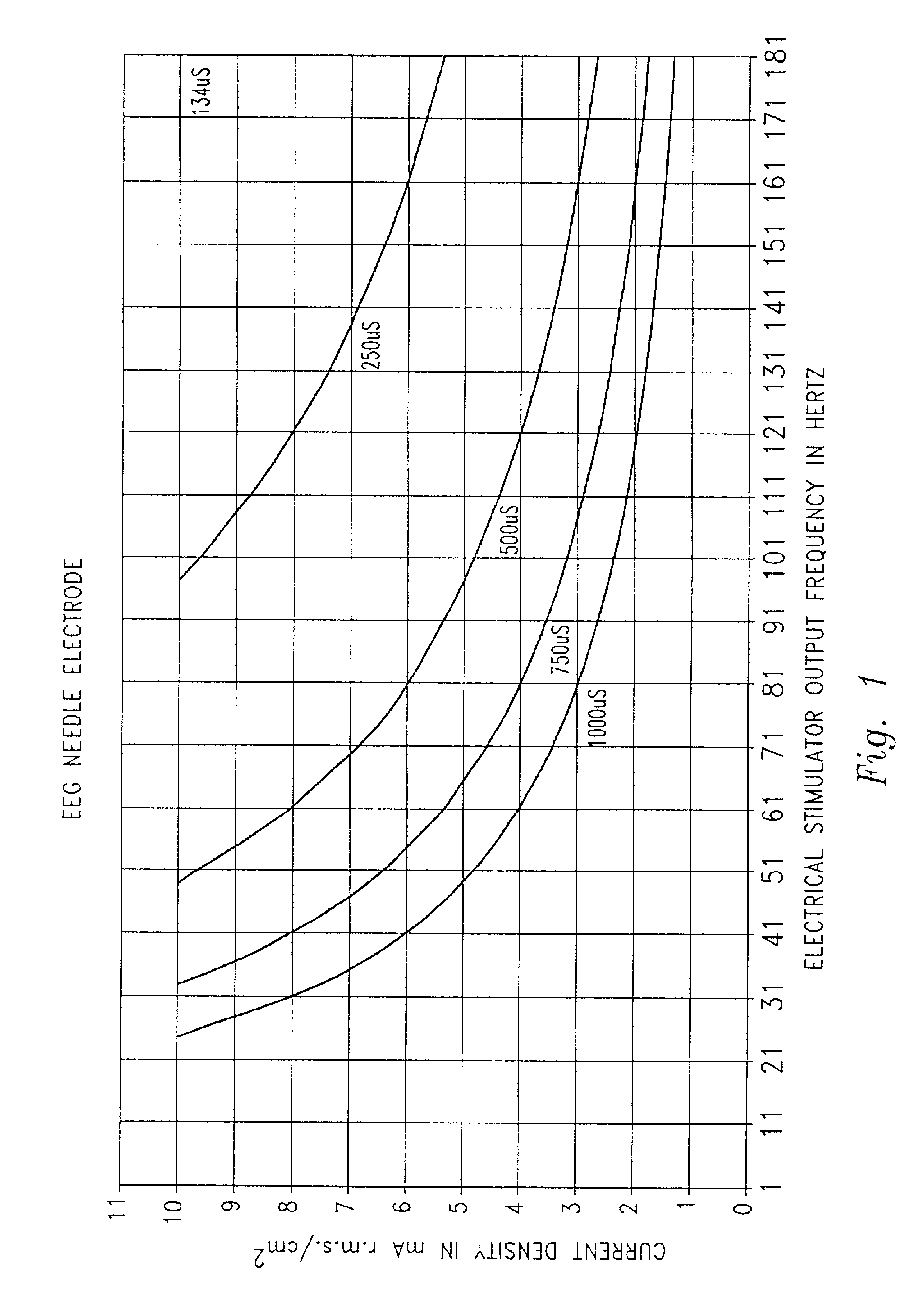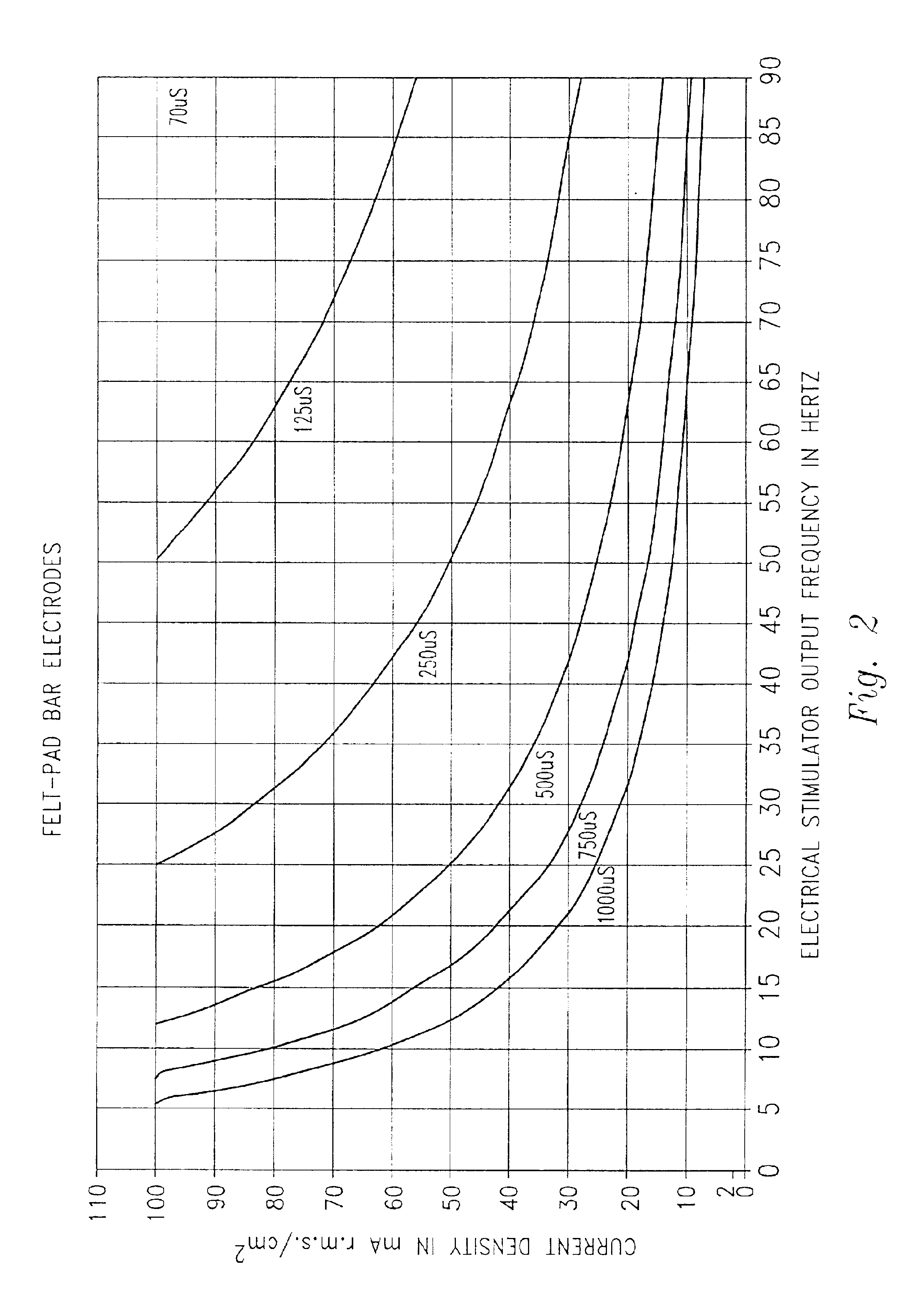Medical electrode for preventing the passage of harmful current to a patient
a technology of harmful electric current and medical electrodes, which is applied in the field of medical electrodes, can solve the problems of needle vaporization, death by electrocution, and damage to the patient's ankle, and achieve the effect of preventing harmful levels of current passing and preventing harmful electric current passing to the patien
- Summary
- Abstract
- Description
- Claims
- Application Information
AI Technical Summary
Benefits of technology
Problems solved by technology
Method used
Image
Examples
Embodiment Construction
[0049]The inventive medical electrode described herein stops the passage of harmful current to a patient. “Harmful current” as it is used here translates to current densities that are capable of causing tissue burns or even death by electrocution. Current density corresponds to the amount of current being applied to a square centimeter of tissue surface area. The International Electrotechnical Commission (IEC standard 60601-2-40) has established a current density of 2 mA r.m.s. / cm2 as a safety limit. Current densities beyond this safety limit tend to cause burns or electrocution.
[0050]FIGS. 1 and 2 illustrate graphs showing the relationship of the variables of electrode surface area, time of applied current, and current frequency (in Hertz) on current density(mA r.m.s. / cm2). FIG. 1, is illustrative of a needle electrode, which has a small surface area, and FIG. 2 is for a felt-pad bar electrode having a large surface area. Each curve on the graphs is representative of current densit...
PUM
 Login to View More
Login to View More Abstract
Description
Claims
Application Information
 Login to View More
Login to View More - R&D
- Intellectual Property
- Life Sciences
- Materials
- Tech Scout
- Unparalleled Data Quality
- Higher Quality Content
- 60% Fewer Hallucinations
Browse by: Latest US Patents, China's latest patents, Technical Efficacy Thesaurus, Application Domain, Technology Topic, Popular Technical Reports.
© 2025 PatSnap. All rights reserved.Legal|Privacy policy|Modern Slavery Act Transparency Statement|Sitemap|About US| Contact US: help@patsnap.com



